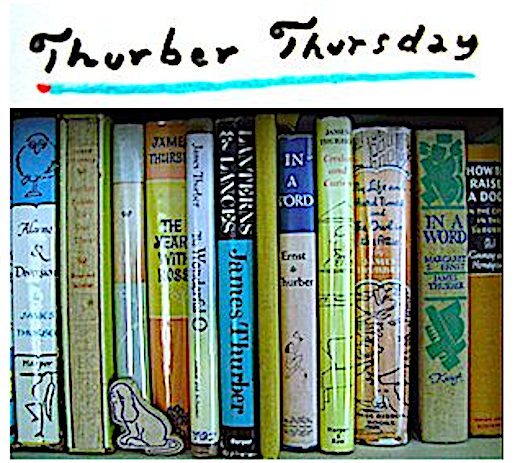The Other Side
Last week I showed you the rabbits side of a Thurber piece recently arrived here at the Spill. The piece is unusual in that it has drawings on both sides. As promised, here’s the other side:
Here’s what the drawings looked like when published in The New Yorker, July 29, 1939 as part V of Thurber’s series, “Fables For Our Time”:
As with the rabbits, when Thurber collected the Fables in Fables For Our Time in book form, he redrew the participants.
If you pick up a copy you’ll see that the crow, in “The Crow and the Oriole” is different than the one that appeared in The New Yorker. So is the the elephant (shown on the cover) in “The Elephant Who Challenged The World,” and the stork in “The Stork Who Married A Dumb Wife.”
And more…
The other day a Commenter requested more information on the markings that appear on the original drawing of the rabbits. I’ve IDed some of the markings, and for help on others I reached out to Bob Ciano, a renowned creative director, art director, designer and teacher (Bob and I are currently working on a project together).
Here again are Thurber’s rabbits:
We’ll begin with the easiest marking, the 7″ just below the rabbit at the bottom of the drawing. The 7″ indicates the width of the page in the magazine. The arrows leading away from the 7″ point to the edges of the page.
New Yorker Editorial Department: the stamp (with the magazine’s address) is self-explanatory.
August 26 1939: appears both in stamp form, and hand-written. It refers to the date of the issue the rabbits appeared in The New Yorker.
AA9639: is The New Yorker‘s ID# of the individual piece. Every piece of New Yorker art, including “spot drawings” has its own number. You’ll notice that the Elephant side of the piece has its own number — AA9640.
(Over): indicating there’s art on the reverse of the piece. Usually the back would, of course, be blank save for some ID numbers and, occasionally a direction, such as “A issue,” or “In the Fall,” or the like.
VI: This indicates the Fable is the sixth in the series (You’ll notice the Elephant side bears the roman numeral V.
On to Go: the Ok to proceed to print with the piece.
(If anyone out there sees I’ve erred in these notations, please write to me with the correct information)
Here’s where Mr. Ciano’s help was invaluable:
Four blues & hold: “The four blues refers to ‘bluelines’ of blueprints which was a way of proofing. Back in the day…the ‘hold’ would just mean not to go forward, probably waiting for an OK or sign off.”
54.3 (penciled within a circle): “I think that would be the percentage for shooting the original to get an image that was 7″ wide.”






I am that Commenter! Thanks so much for the detailed analysis of the markings. It fascinates me that such a wealth of practical information has been added to the drawings and they remain useable. “KSW” would be brilliant, but it does really look like “H” I’m afraid.
I really appreciate you taking the time to respond to my question.